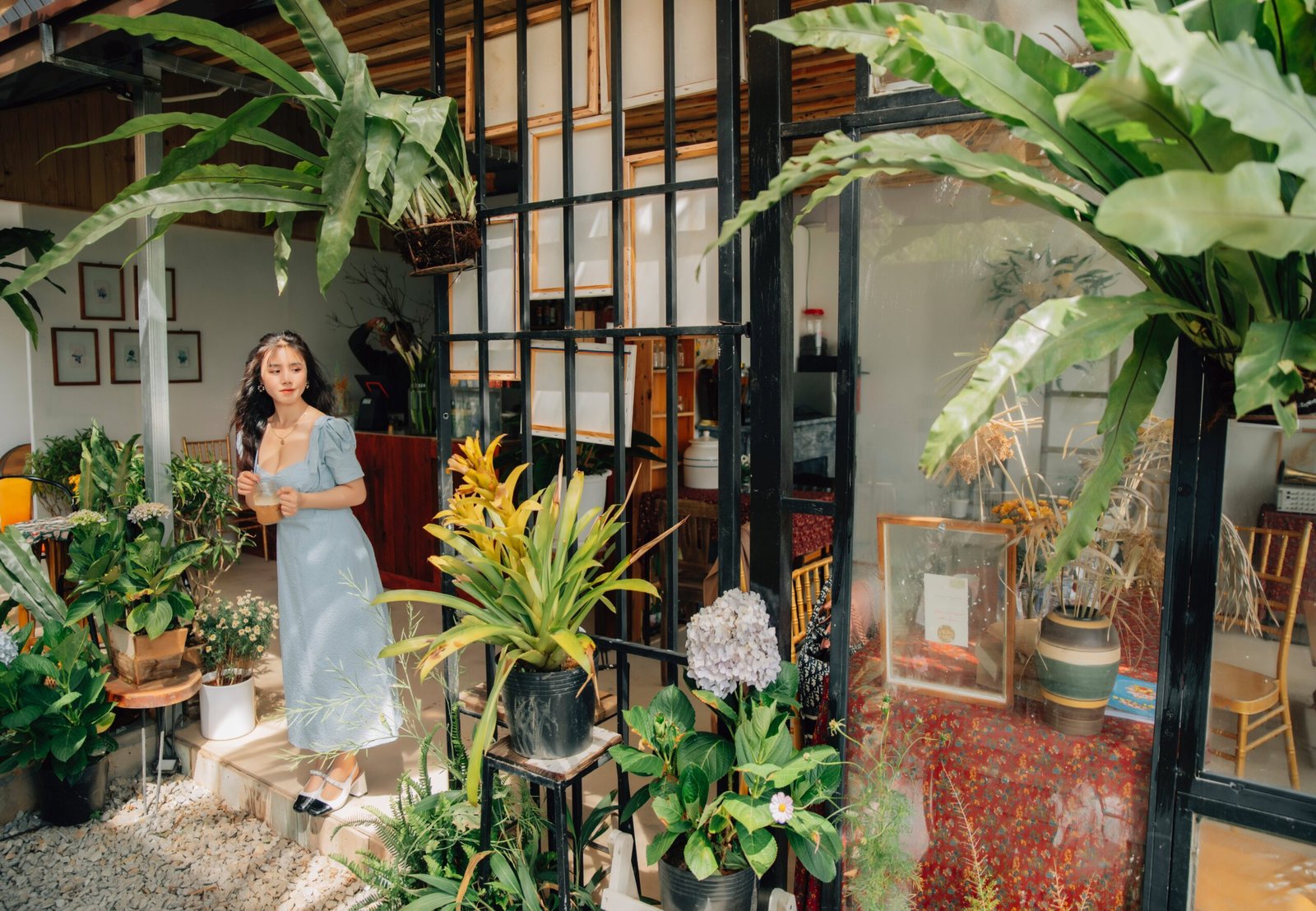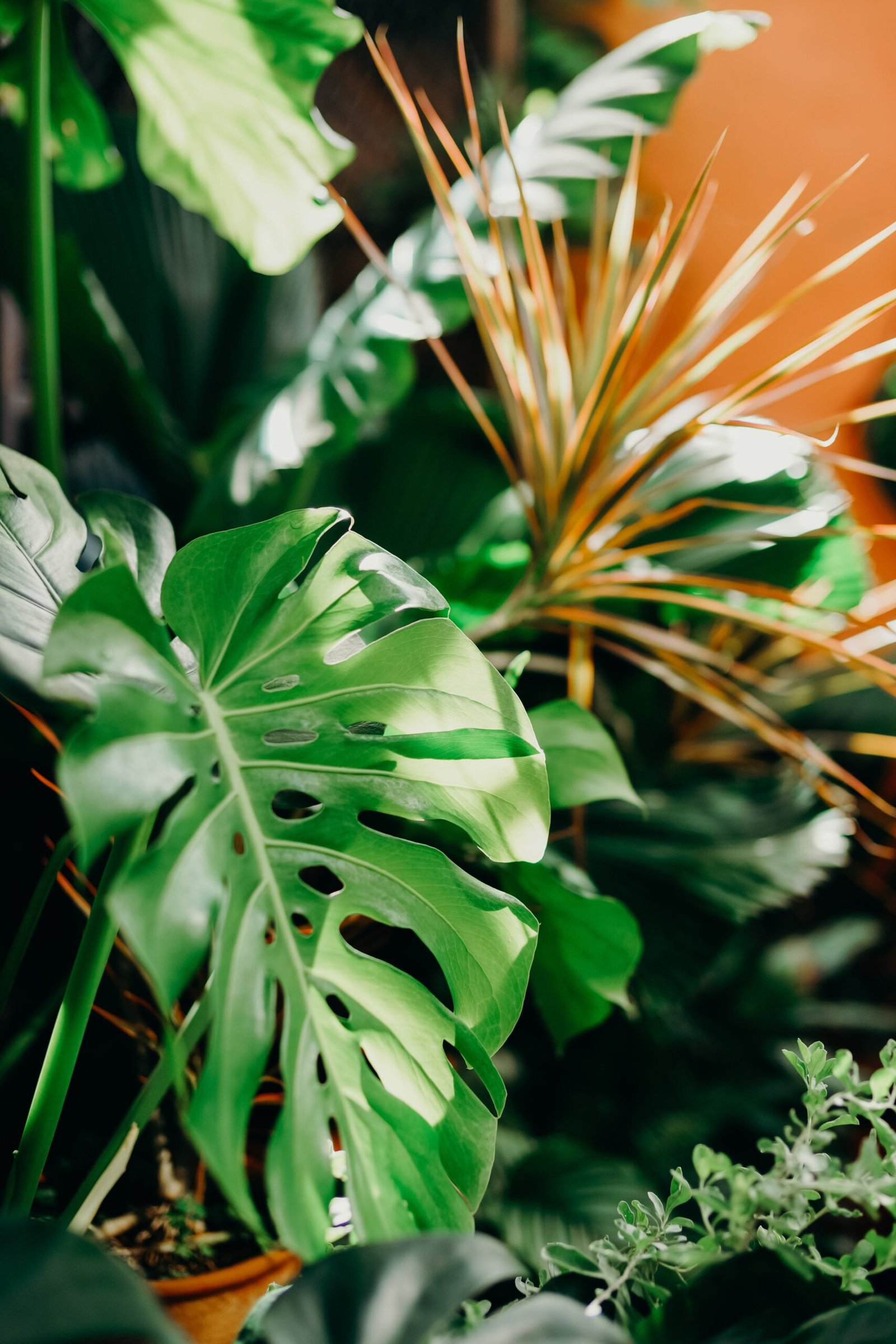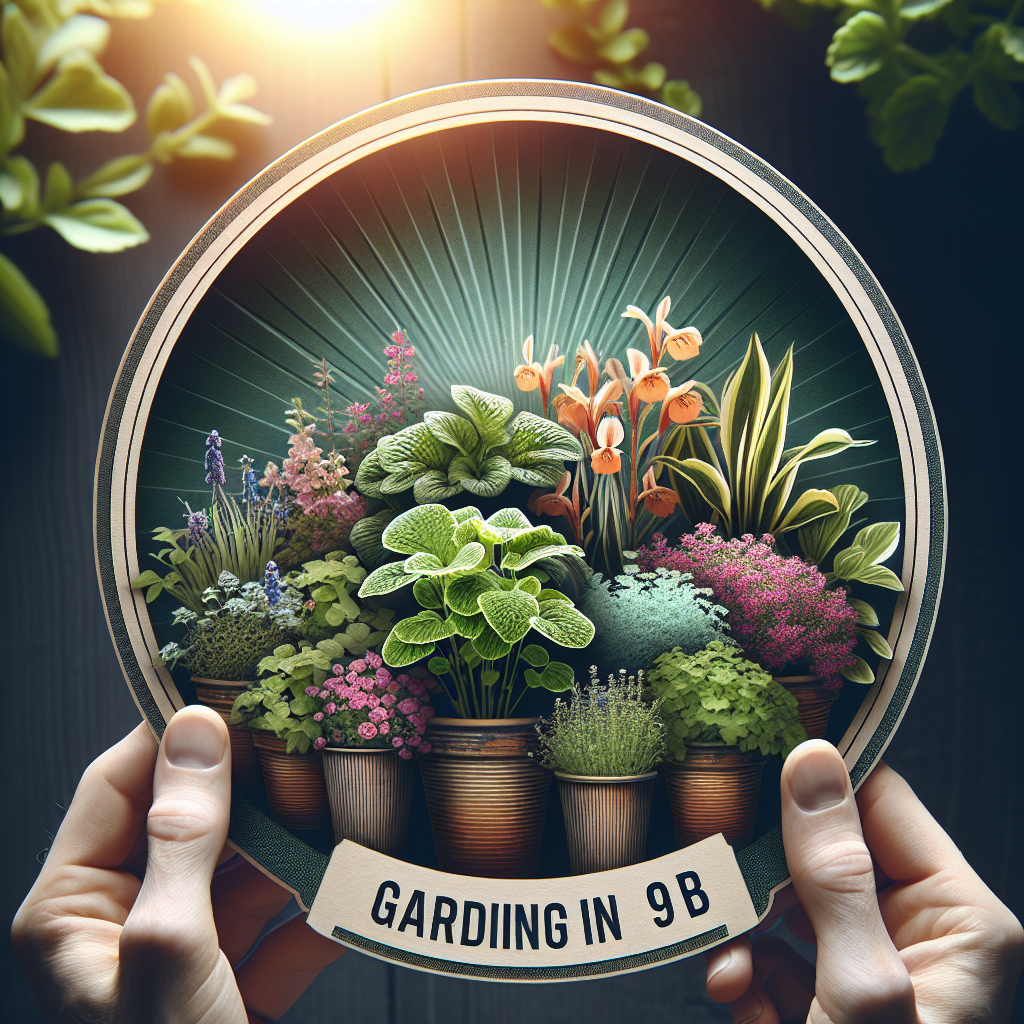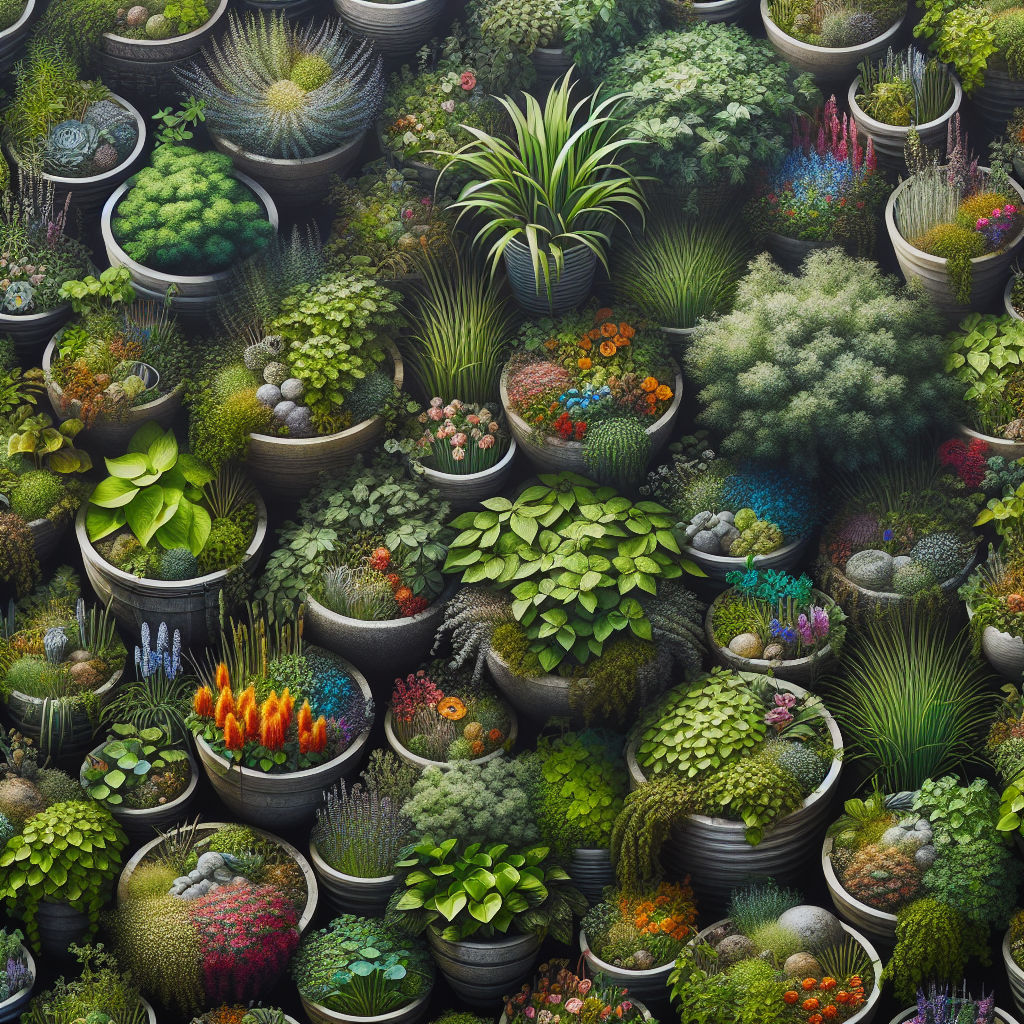
Are you living in Zone 9b and dreaming of having a lush and vibrant garden, but limited space is holding you back? Don’t worry, we have got you covered with our 10 essential container gardening tips for Zone 9b. Whether you have a small balcony or a tiny backyard, these tips will help you transform any space into a thriving oasis of greenery. From choosing the right plants to maintaining proper watering and fertilization, our tips will guide you through every step of the container gardening process. Get ready to unleash your inner gardener and create a stunning and sustainable garden in Zone 9b.

Choosing the Right Containers
Consider the Size and Material
When choosing containers for your zone 9b container garden, it’s important to consider the size and material of the containers. Opt for containers that are large enough to accommodate the root systems of your plants, ensuring that they have enough space to grow and thrive. Additionally, consider the material of the containers. Terra cotta pots are a popular choice as they are porous and allow for better airflow and drainage. However, plastic and resin containers are lightweight and retain moisture better, making them ideal for areas with hot and dry climates like zone 9b.
Ensure Adequate Drainage
Good drainage is crucial for the health of your container plants. Without proper drainage, water can build up and lead to root rot and other issues. When selecting containers, look for ones that have drainage holes at the bottom. If you come across a container that you love but lacks drainage holes, you can easily drill some yourself. Just make sure to place a saucer or tray underneath to catch excess water and prevent damage to your patio or balcony.
Choose Lightweight Containers
If you plan on moving your containers frequently or want to hang them from hooks or brackets, consider choosing lightweight containers. Plastic and resin containers are excellent options as they are lightweight while still being durable. This makes them easier to transport and hang, allowing you to rearrange your container garden as needed. Additionally, lightweight containers reduce the strain on balconies and decks, preventing potential damage to your outdoor space.
Selecting the Right Plants
Consider Zone 9b Climate
Zone 9b is characterized by hot summers and mild winters, making it a suitable climate for a wide range of plants. However, it’s essential to consider the specific microclimate of your area within zone 9b. Factors such as proximity to the coast, elevation, and sun exposure can impact the local climate and require plants with different heat and cold tolerances. Take the time to research the specific requirements of plants that thrive in your area to ensure successful container gardening.
Choose Plants Suitable for Containers
Not all plants are well-suited for container gardening. When selecting plants for your zone 9b container garden, opt for varieties that are known to thrive in containers. Look for plants that have a compact growth habit and can tolerate the limited root space. Herbs like rosemary, thyme, and basil, as well as flowering plants like geraniums and petunias, are excellent choices for container gardening. Additionally, consider mixing in some ornamental grasses and succulents to add texture and interest to your container arrangements.
Consider Sun and Shade Requirements
Before selecting plants for your container garden, it’s important to assess the available sunlight in your outdoor space. Some plants thrive in full sun, while others prefer partial shade or full shade. Take note of the amount of direct sunlight your containers will receive throughout the day and choose plants accordingly. This will help ensure that your plants receive the appropriate amount of light needed for healthy growth and blooming.

Preparing the Soil Mix
Use High-Quality Potting Mix
The soil mix you use for your container plants is crucial to their overall health and success. Opt for a high-quality potting mix specifically formulated for containers. These mixes are usually lightweight and well-draining, allowing for proper airflow and water retention. Avoid using garden soil or topsoil, as they tend to be heavy and can lead to poor drainage. High-quality potting mixes often contain a balanced blend of nutrients, ensuring that your plants have access to the essential elements they need.
Consider Adding Organic Matter
Incorporating organic matter into your soil mix can provide numerous benefits to your container plants. Organic matter, such as compost or well-rotted manure, improves soil structure, enhances nutrient retention, and promotes beneficial microbial activity. Mix in a small amount of organic matter into your potting mix to enrich it and ensure that your plants have access to a steady supply of nutrients throughout the growing season. Be mindful of the quantity, as too much organic matter can lead to overly rich soil that may cause root burn or fungal issues.
Ensure Good Drainage
Proper drainage is essential for healthy roots and overall plant growth. To enhance drainage in your containers, consider adding a drainage layer at the bottom. This can be achieved by placing broken pottery shards, stones, or a layer of coarse gravel in the bottom of the container before adding the soil mix. The drainage layer allows excess water to escape, preventing waterlogged soil that can suffocate the roots. Remember to regularly inspect your containers and ensure that the drainage holes are not blocked to maintain good drainage throughout the growing season.
Providing Adequate Watering
Water Consistently
Consistent watering is vital for the health of your container plants, especially in a zone 9b climate with hot and dry summers. Determine a watering schedule that suits your plants’ needs and stick to it. Container plants generally require more frequent watering compared to plants in the ground, as their limited root space can dry out quickly. Monitor the moisture levels of the soil regularly and adjust your watering schedule accordingly. Remember, it’s better to water deeply and less frequently to encourage healthy root development.
Avoid Overwatering
While it’s important to provide adequate water to your container plants, be cautious not to overwater them. Overwatering can lead to root rot, nutrient leaching, and fungal diseases. To prevent overwatering, always check the moisture level of the soil before watering. Stick your finger about an inch into the soil, and if it feels dry, then it’s time to water. If the soil is still moist, hold off on watering for a few more days. Additionally, ensure that your containers have proper drainage to allow excess water to escape.
Monitor Moisture Levels
Regularly monitoring the moisture levels of the soil in your containers is crucial for maintaining healthy plants. This can be done by inserting a moisture meter or even using your finger to gauge the moisture content. Some plants may have specific moisture requirements, so it’s important to familiarize yourself with the individual needs of the plants in your container garden. Adjust your watering schedule accordingly to ensure that your plants receive the right amount of moisture without becoming waterlogged.

Fertilizing Container Plants
Choose Slow-Release Fertilizers
Fertilizing your container plants is essential to replenish nutrients that can become depleted over time. When selecting fertilizers for your zone 9b container garden, opt for slow-release formulations. Slow-release fertilizers release nutrients gradually over an extended period, providing a steady supply to your plants without the risk of fertilizer burn. These fertilizers are available in various forms, including pellets, spikes, and granules. Follow the instructions on the fertilizer package to determine the appropriate application rate for your specific plants.
Follow Recommended Application Rates
To avoid over- or under-fertilizing your container plants, it’s important to follow the recommended application rates provided by the fertilizer manufacturer. Over-fertilizing can lead to nutrient imbalances, root burn, and excessive foliage growth at the expense of flowers or fruit production. Under-fertilizing, on the other hand, can result in nutrient deficiencies and poor plant growth. Take the time to read the instructions carefully and apply the fertilizers as directed for optimal results.
Apply Fertilizers at the Right Time
Timing is crucial when it comes to fertilizing container plants. Generally, it’s best to apply fertilizers during the active growing season when plants have the greatest need for nutrients. This typically falls in spring and summer in zone 9b. However, always refer to the specific requirements of your plants, as some may benefit from additional fertilizer applications in fall or winter. Remember to water your plants before and after fertilizing to prevent potential burning of the roots and to ensure that the nutrients are distributed evenly throughout the container.
Controlling Pests and Diseases
Regularly Inspect Plants
Regular inspection of your container plants is essential for early detection and prevention of pests and diseases. Take the time to examine your plants for any signs of pest infestation or disease, including discolored leaves, holes, webs, or sticky residue. Inspect both the foliage and the undersides of the leaves, as well as the stems and soil surface. By catching the signs early, you can take prompt action and prevent the pests or diseases from spreading to other plants.
Use Natural or Organic Pest Control Methods
When it comes to controlling pests in your container garden, using natural or organic methods is not only environmentally friendly but also safer for you and your plants. There are several natural pest control options available, such as neem oil, insecticidal soap, and companion planting. These methods can help deter common pests like aphids, mealybugs, and spider mites. Additionally, attracting beneficial insects, such as ladybugs and lacewings, can help keep pest populations in check naturally.
Take Prompt Action When Needed
If you do encounter pests or diseases in your container garden, it’s important to take swift action to prevent further damage. Remove affected leaves or plants immediately and dispose of them away from your garden area. Consider treating the remaining plants with the appropriate organic pest control method to eliminate any remaining pests. It may also be helpful to quarantine any infected plants to prevent the spread of the pests or diseases to healthy plants. Regularly monitor your plants after treatment to ensure that the infestation is fully eliminated.

Managing Sun and Shade Exposure
Observe Optimal Sun Exposure
Understanding the optimal sun exposure for your container plants is crucial for their growth and overall health. Some plants thrive in full sun, requiring at least 6 to 8 hours of direct sunlight per day. Others prefer partial shade, which typically means they need around 4 to 6 hours of direct sunlight. Take note of the sun exposure in your outdoor space and choose plants accordingly. If you have limited sun exposure, consider using shade-tolerant plants or placing your containers in areas with filtered sunlight.
Provide Shade as Needed
In a zone 9b climate with intense summer heat, it’s important to provide shade to your container plants when necessary. Consider using umbrellas, shade cloth, or placing your containers under shade trees or pergolas to protect them from excessive heat and direct sunlight. Shade can help prevent sunburn and heat stress on the plants and reduce water loss through evaporation. Be mindful of the shadows cast by nearby structures or buildings and adjust the positioning of your containers accordingly to ensure they receive the ideal balance of sunlight and shade.
Monitor and Adjust
As the seasons change and the angle of the sun varies, it’s important to regularly monitor and adjust the sun exposure for your container plants. What may have been an ideal spot during the cooler months may become too exposed as the summer heat intensifies. Similarly, areas that were previously shaded may now receive more sunlight. Keep a close eye on your plants and the changing patterns of sun and shade in your outdoor space. This will allow you to make necessary adjustments and ensure that your plants continue to receive the optimal amount of sunlight for their specific needs.
Pruning and Deadheading
Regularly Prune to Maintain Plant Shape
Regular pruning is an essential task in container gardening, helping to maintain the shape and compactness of your plants. When plants become overgrown or leggy, they may not fit well within the confines of a container or may become unbalanced. Pruning can help control the size and shape of your plants, promoting bushier growth and preventing them from becoming unruly. Use clean and sharp pruning shears to remove any dead, damaged, or excess growth. Additionally, pinch back the tips of your plants to encourage branching and fuller growth.
Remove Spent Flowers
Deadheading, or removing spent flowers, is an important task to keep your container plants looking tidy and to encourage continuous blooming. Many flowering plants, such as petunias and geraniums, benefit from deadheading as it redirects the plant’s energy towards producing new blooms instead of seed production. Regularly inspect your container plants for faded or wilted flowers and promptly remove them by pinching or cutting them off just above a leaf node. This will not only improve the appearance of your plants but also extend their blooming period.
Encourage Growth and Blooming
Pruning and deadheading are not only maintenance tasks but also opportunities to encourage growth and blooming in your container plants. By selectively pruning your plants, you can stimulate new growth in desired areas and maintain a compact and bushy shape. Removing spent flowers prevents the plant from redirecting energy towards seed production, allowing it to focus on producing more flowers. By consistently pruning and deadheading your container plants, you can create a lush and vibrant display that will be the envy of your garden.

Protecting from Extreme Temperatures
Shield Plants from Frost
In zone 9b, where winter temperatures can occasionally drop below freezing, protecting your container plants from frost is crucial. Frost can damage or kill sensitive plants, causing wilting, browning of leaves, and even death. To shield your plants from frost, consider bringing them indoors or placing them in a sheltered location such as a garage or greenhouse during periods of extreme cold. Alternatively, you can cover your plants with frost blankets or burlap to provide insulation and protect them from freezing temperatures.
Provide Shade during Hot Summer Months
During the scorching summer months in zone 9b, container plants can suffer from heat stress and sunburn. To protect your plants from extreme heat, provide shade during the hottest part of the day. This can be achieved by using shade cloth, umbrellas, or strategically positioning your containers in areas with filtered sunlight. Shade helps to reduce the risk of dehydration, sunburn, and wilting. Additionally, it can prevent the soil from drying out too quickly and reduce water loss through evaporation.
Move Containers as Needed
Flexibility is one of the advantages of container gardening, allowing you to move your plants as needed to provide optimal growing conditions. If you notice that your plants are not thriving in their current location, consider relocating them to a spot with better sun exposure, shade, or protection from extreme temperatures. Moving containers can also help you create visual interest and change the layout of your container garden. Just be mindful of the weight of the containers and take necessary precautions to avoid strain or injury.
Seasonal Maintenance Tasks
Clean and Sterilize Containers
Regular maintenance of your containers is necessary to ensure the health of your plants and prevent the buildup of pests and diseases. At the end of each growing season, thoroughly clean and sterilize your containers before replanting. Remove any old soil and debris and wash the containers with a solution of mild soap and water. Rinse them thoroughly and allow them to dry completely before using them again. Sterilizing your containers helps eliminate any pathogens or pests that may be lurking, reducing the risk of future plant health issues.
Inspect and Replace Damaged Containers
Over time, containers can become damaged or show signs of wear and tear. Inspecting your containers regularly allows you to identify any cracks, chips, or weak spots that may compromise their functionality. Damaged containers can leak water, provide entry points for pests, or even cause accidents if they break. If you come across damaged containers, consider replacing them to ensure the well-being of your plants. Investing in sturdy and durable containers will provide long-term benefits and contribute to the overall success of your container garden.
Renew Soil Mix and Fertilizer
Before planting your container garden for a new season, it’s important to renew the soil mix and fertilizer. Remove any remaining soil from the previous season, as it may harbor pests or diseases. Mix in fresh potting mix, ensuring that it is well-draining and nutrient-rich. Consider adding a slow-release fertilizer to provide a steady supply of nutrients throughout the growing season. This will give your plants a strong start and set them up for healthy growth and abundant blooms. Remember to adjust your fertilization schedule based on the specific needs of your plants.
By following these essential container gardening tips for zone 9b, you can create a thriving and beautiful container garden that will bring joy and beauty to your outdoor space. From choosing the right containers and plants to providing adequate care and maintenance, each step plays a crucial role in the success of your container garden. So grab your gardening gloves, select your favorite plants, and let your green thumb shine as you embark on your container gardening journey in zone 9b!





